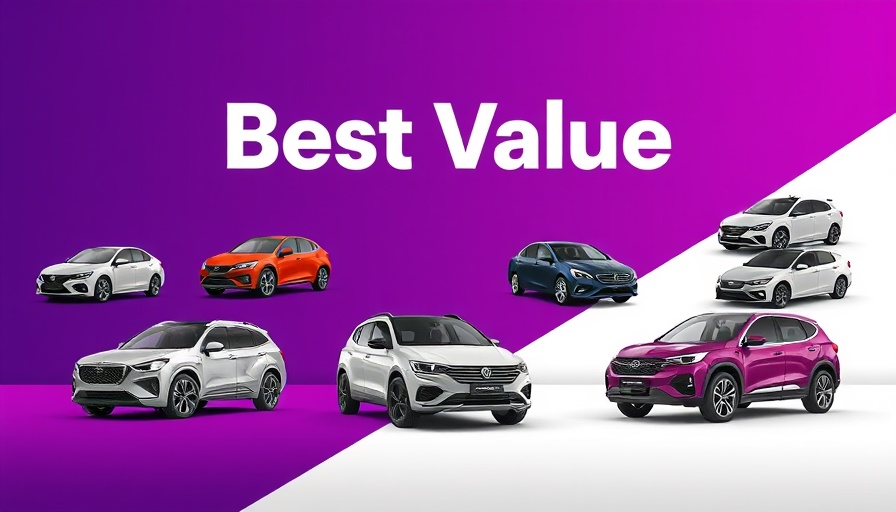
Facing Tariffs: The New Landscape for Car Buyers
As car enthusiasts and potential buyers brace for rising tariff-induced price hikes, vehicle affordability is becoming a paramount concern. The impending 25% tariffs on vehicles assembled outside of the U.S., effective April 3, threaten to significantly increase prices, prompting consumers to seek the best value vehicles urgently. In response to this shifting market landscape, Cars.com unveiled its 2025 Affordability Report, providing consumers with crucial insights into cars that offer the best bang for the buck amidst these challenges.
Best Value Vehicles to Consider Right Now
The Cars.com report meticulously analyzed several factors to rank vehicles within their segments. These factors included price, essential safety features, technological offerings, fuel efficiency, and projected one-year fuel costs. The list highlights several standout models:
- Subcompact Car: Nissan Versa SV
- Compact Car: Nissan Sentra S
- Subcompact SUV: Chevrolet Trax LS with Driver Confidence Package
- Compact SUV: Ford Escape Active
- Mid-Size SUV: Kia Sorento LX
- Compact Pickup Truck: Ford Maverick XL
- Mid-Size Pickup Truck: Nissan Frontier S 4×2 King Cab
- Full-Size Pickup Truck: Ford F-150 XL
- Electric Vehicle: Hyundai Ioniq 6 SE Long Range
Understanding these options is essential for shoppers who want reliable and value-oriented vehicles before prices potentially soar.
Current Inventory: A Temporary Shield Against Tariffs
At present, new vehicle prices have stabilized around $49,000, a trend largely attributed to current inventories that have yet to feel the impact of the impending tariffs. However, Cars.com warns that prices could start to rise significantly—by an estimated $3,000 to $10,000—if tariffs come into effect as planned. The report also highlights a critical strategy for buyers: procuring cars manufactured domestically to sidestep tariff-related price increases.
American-Made Vehicles: Protection Against Rising Costs
Cars.com’s inventory of best value U.S.-made vehicles includes models from notable American brands like Ford, Chevrolet, and RAM. Yet, it also encompasses vehicles produced overseas yet assembled in U.S. factories, such as specific models from Hyundai and Subaru. With nearly half of all U.S. vehicle sales in 2024 being imports, it’s imperative for consumers to understand which models are safe from tariff repercussions.
What This Means for Consumers
The surge in tariffs has led automakers to adjust their operations rapidly. Companies like Ford, Hyundai, and Kia are reportedly increasing their U.S.-based inventories by over 25% compared to the previous year to help manage costs and meet consumer demand. This proactive approach could serve as an advantage for buyers amid changing market conditions.
Cars.com’s editor-in-chief, Jenni Newman, emphasizes the importance of acting quickly, saying, “Shoppers should feel empowered to navigate current inventories and be on the lookout for affordable options. The more informed you are, the better your chances of securing a deal before prices escalate.”
Final Thoughts: Take Action Before Prices Rise
If you’re considering a new vehicle purchase, now is the time to act. Understanding the dynamics of the current market and focusing on vehicles with strong value propositions will ensure that you make a smart investment before potential price increases come into play. With plenty of affordable options available at dealer lots, being well-informed can make all the difference in securing a deal that benefits your budget.
 Add Row
Add Row  Add
Add 




Write A Comment